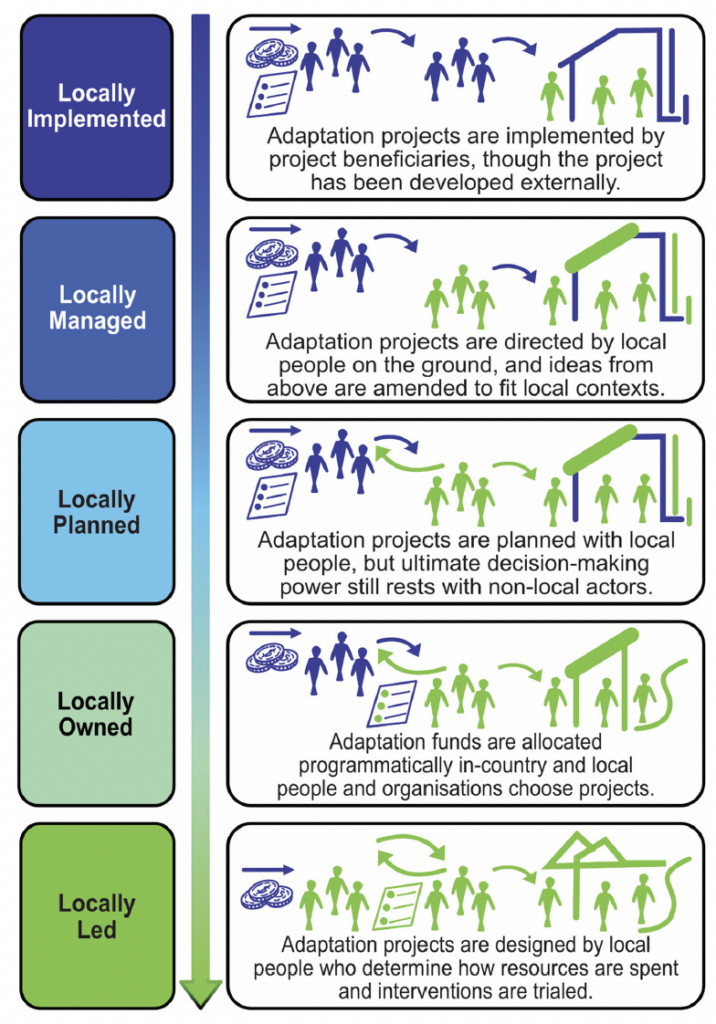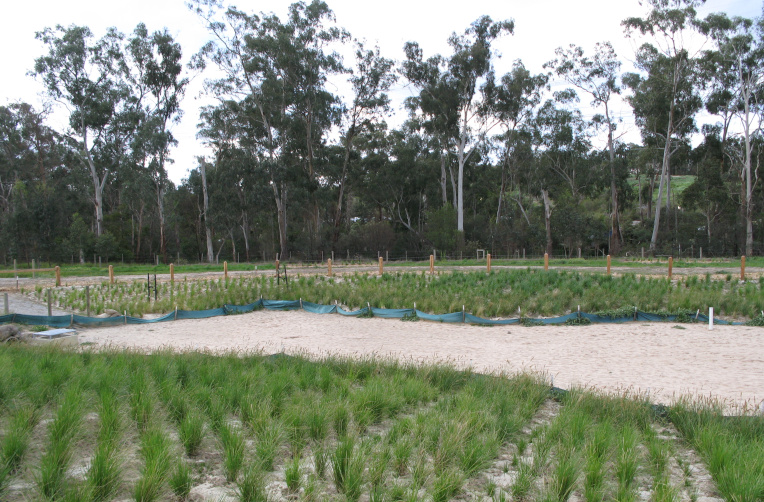The Intergovernmental Panel on Climate Change’s (IPCC) sixth assessment report made it clear that many adaptation projects around the world are not delivering on the promise to build resilience to climate impacts.
Currently, less than 10% of global climate finance is reaching communities directly, restricting the intended beneficiaries to have little or no say over how funds are to be spent.
Acknowledgement of this has triggered calls to strengthen “locally led adaptation” (LLA).
This form of adaptation is “controlled by local people, grounded in local realities, ensures equity and inclusivity, and is facilitated by local networks and institutions”, according to a 2021 study in the International Journal of Justice and Sustainability.
But is it truly different from previous approaches, such as ‘community-based adaptation’ (CBA)?
In our new paper, adaptation researchers from both the global south and global north collaborated together to explore these questions and demonstrate how top-down barriers limit local agency in decision-making, despite donors’ intentions to localise adaptation.
We found that there are a number of challenges that remain with regards to LLA, including defining what “local” really means, deciding who controls resources, and agreeing how to track success.
But such an approach could drive the radical change needed to move beyond the incremental shifts of past attempts at climate adaptation.
From CBA to LLA
In the early- and mid-2000’s researchers, academics and practitioners were enthusiastic about CBA. Distinctions between “planned” and “unplanned” adaptation, which could be better described as funded and unfunded, were made.
Planned/funded adaptation was external and “real”, while unplanned/unfunded adaptation was dismissed as simply being what was happening on the ground – and, therefore, not considered adaptation.
This created a dynamic in which even CBA required external planning and resources. Unsurprisingly, over time, CBA has been critiqued as being too top-down and not having the needed impacts.
This is where the idea of LLA emerged, as calls for stronger local leadership to ensure more effective adaptation grew.
Reviews of CBA projects have shown that barriers to success include many factors related to unpredictable funding flows and trust-building challenges between those implementing and those benefiting from the projects.
Frequently, institutional and attitudinal barriers keep funding in the hands of non-local multilateral organisations and NGOs. LLA promises to not only direct more funding to the local level, but to ensure local leadership in adaptation decision-making throughout the project cycle.
Dealing with these barriers now – as LLA begins to gain momentum – can ensure that this funding and implementation model fulfils its potential to promote climate justice and equity in local communities.
Many donors and actors have even signed on to the Eight Principles of Locally led Adaptation, launched by the International Institute for Environment and Development.
The time is ripe for close engagement with what it will mean for adaptation to be locally led. Under the UN climate process, countries and other stakeholders are taking part in a two-year work programme to decide on the framework for a “global goal on adaptation”. The parameters of this goal will set the course for adaptation globally for decades to come, as well as serve as a crucial tool for assessing our adaptation progress.
Why should adaptation be locally led?
LLA encourages bottom-up approaches in order to better facilitate and finance local initiatives. The goal is to enable local communities and institutions to “lead” rather than be tokenistic beneficiaries of adaptation efforts.
Top-down adaptation approaches can create injustices and further marginalise vulnerable groups. Interventions are often centred on the priorities and perceptions of donors and elite organisational actors, while excluding local actors from project development and decision-making. Not only does this lead to poor project outcomes; it can even go as far as resulting in maladaptation.
How projects are funded, designed and implemented are firmly established in the international system. It will require deliberate and transformative efforts on the part of donors and non-local institutions to change them.
Even more deeply rooted, social inequalities between local and non-local actors, as well as among local actors, shape interactions and give socially powerful actors an upper hand in decision-making. This has to change if adaptation is going to be locally led.
In the figure presented below, we suggest the range of possibilities, beginning with the projects offering the least local agency (top) through to those with the most local agency (bottom). The arrow is intentionally unidirectional to illustrate a progression that moves towards LLA, leaving behind more top-down approaches. Local participation in adaptation below the locally led threshold may be steps in building towards LLA and climate justice.

Projects range from least local agency (top), which are those implemented by project beneficiaries with little local imput, through to most local agency (bottom), which are designed by local people. Source: Rahman, et al. (2023).
Challenges and possibilities
In our new paper, we identified three critical areas where changes could improve understanding of – and the potential for – LLA:
- Defining ‘local’: “Local” is central to the idea of LLA. However, “local” can mean many things. Some see the national government (as opposed to international organisations) as local, while some focus on individual members of a vulnerable household. Also, in any interpretation, “local” will never be homogenous and there will always be a risk of those in power benefitting the most from adaptation projects.To combat these challenges, our paper argues for critical reflection by those who seek to implement LLA on the “who” and “what” of adaptation and development of transformative, bottom-up approaches to funding, planning, implementation and evaluation.
- Controlling resources: Who controls adaptation resources is also critical for the success of LLA. Finance is currently earmarked by funders for projects that match their interests and capacities. A lack of trust between actors at different scales also limits the transfer of funds to the local level. Short project-based funding timelines constrain the possibilities for what interventions can be implemented and for how long. Instead, LLA can be realised by approaching adaptation finance from the perspective of climate justice. Our research shows that funding and planning organisations must change their own institutional infrastructures to make it easier for local actors to engage and access funding directly and that this funding should be consistent and transparent. This will also facilitate local control over projects in the long-term.
- Tracking success: The diversity of local communities and their priorities, as well the inconsistent data availability about such, present challenges for planning projects and tracking the success of such under current adaptation initiatives. Evidence from Vanuatu shows that local experiences are also often pushed aside in the planning process and there is an emphasis on short-term deliverables to report to funders, as shown in a 2019 research paper.To work toward transformative adaptation, our paper argues that LLA efforts should be guided by flexible definitions of “success” that include locally appropriate measures for “failure”. Our research points out that the collective goals of experimentation, collaboration and deep learning are critical to LLA.
Radical change?
As we approach 1.5C of global warming, adaptation becomes increasingly important to address the growing impacts of climate change.
But how can existing unequal power structures be radically changed?
According to Sheela Patel, the founder of the Slum/Shack Dwellers International, a global network of slum dwellers, one way of doing so “is to have more and more ‘grassroot leaders’ sitting with people who make decisions about money”.
Our paper argues that when LLA funding, expertise and resources are made available to and controlled by local actors, it helps avoid the risk of maladaptation and enables just adaptation. A requirement is that priorities of local communities are reflected, as opposed to the values and expectations of funders.
This is not to suggest that current actors do not have important roles to play moving forward.
Based on the analysis, the paper concludes with the following suggestions for NGOs, donors, research organisations and consulting companies external to beneficiary communities:
- Offer advice, guidance and technical support that can be adapted by local organisations and made relevant to local conditions and circumstances.
- Share data with local actors so that they can be empowered to make their own decisions – this could include the outcomes of their LLA initiatives, especially where the initiatives were characterised by poor performance.
- Use their bureaucratic skills to draw attention to the underlying drivers of vulnerability at the local level.
- Protect local actors from counterproductive incentives and pressures.
This paper offers a new analysis of adaptation that moves beyond the rhetoric, incremental shifts and organisational tweaks that have characterised past attempts to transform adaptation.
It presents a strong case for why language and reframing are not sufficient to change who has control over adaptation decision-making and argues instead that LLA requires radical shifts in power.
Teaser photo credit: Wetland restoration in Australia. By Nick carson at English Wikipedia – Transferred from en.wikipedia to Commons., Public Domain, https://commons.wikimedia.org/w/index.php?curid=9959121





